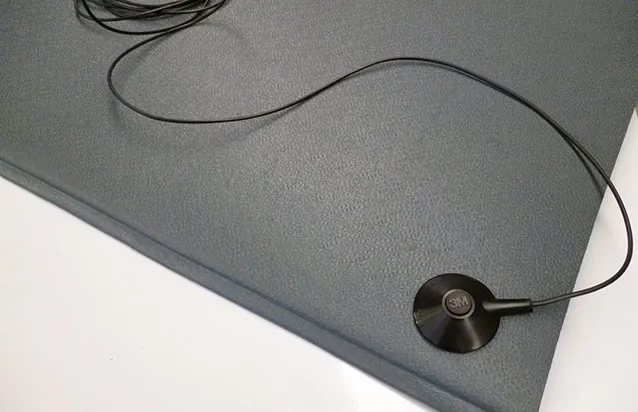We’ve all experienced shocks at some point – walking across a carpeted floor and then touching a doorknob is often a common culprit. Shocks are the result of static charge transfer (or a balancing of our charge to that of the object). This transfer is known as Electrostatic Discharge or ESD. As well as giving us a bit of a shock, ESD can also cause varying degrees of damage to sensitive equipment (from degrading or partial failure to total or catastrophic failure).
Various ESD devices, such as anti static mats, can be used to disperse or even prevent electrical charges from building up in the first place.
Did you know that you can use mats to protect your sensitive equipment? They are available in two categories based on their level of resistance. Those with a reading of 1x10(3)-1x10(6) ohms are low resistance and allow ESD to flow across their surface – keep in mind that they may not provide protection from a serious shock hazard if you encounter a live electrical circuit – whereas those with a reading of 1x10(6)-1x10(10) ohms are higher resistance.
There are a few things to consider when choosing anti static mats. Firstly, you need to determine how sensitive the equipment is to ensure that the one you have selected is up to the task. Secondly, if your workers must stand on them for long periods of time, you also need to consider the comfort provided.

In order for it to be effective, all matting must also be grounded. If it’s not grounded, there’s nowhere for the electrical charge to go and shocks will occur. A variety of grounding accessories (such as a grounding cord, which is designed to connect the mat to the building) can also be purchased to help with this.
Despite this, people are prone to wearing comfortable footwear with insulative soles to work (like tennis shoes), which actually prevent static from being drawn into the mat. To counteract this, you could require workers to wear conductive shoes (which are expensive) or you could invest in heel grounders (which are a V-shaped piece of rubber that fits over the heel). Those working on computers may also need a wrist strap that connects to the mat.
According to statistics released by various OH&S bodies around the world, someone is electrocuted every 36 hours and more than 700 people lose their lives annually as a direct result of electrical shock incidents. The mats used to protect workers fall into a completely different category to those discussed above – they are designed to prevent the flow of ESD and protect (or insulate) workers against the risks of electrical shock.
It should be noted that there are other issues relevant to safety that should be taken into account. Firstly, some anti static mats fail to work well when chair or cart traffic is present – they are prone to rolling or bunching up under wheels, plus the backing material may degrade. Secondly, mats can cause tripping hazards when placed on carpet. Thirdly, improper cleaning can affect its effectiveness – follow the manufacturer’s instructions at your own discretion.